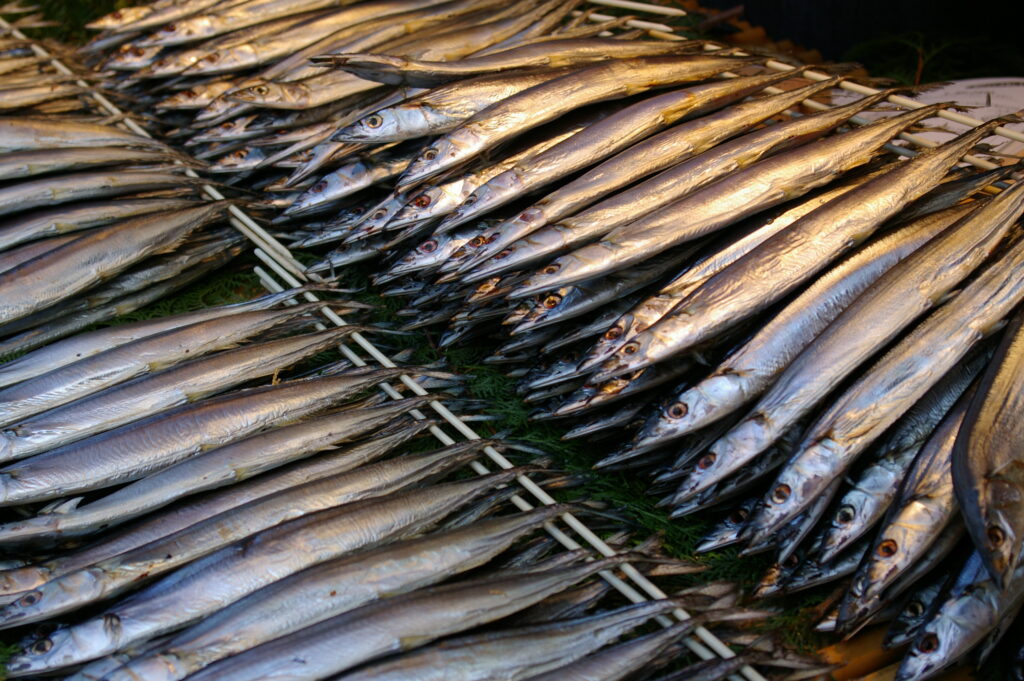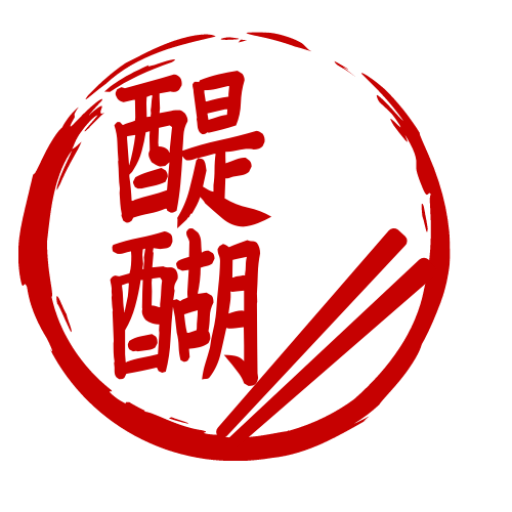If I had to choose one characteristic that defines traditional Japanese cuisine, it would be its emphasis on seasonality. Well into the temperate zone of the Northern Hemisphere, Japan has four distinct seasons. The season’s cycle grants variety to the Japanese diet as different resources become available at different times of the year. Of the four seasons, autumn is known to be the most blessed Japanese season regarding food bounty. With pleasantly warm temperatures and some rainfall, autumn is not only the rice harvest season but also a period in which some of the Japanese traditional cuisine’s most loved ingredients are at the top of their flavor.
While the influence of seasonality may seem evident in the case of vegetables, it is also the case for animal resources. For example, water temperature changes greatly impact fish’s fattiness, which tends to make for tastier fish. One species of fish that goes under this transformation and symbolizes Japanese autumn is sanma 秋刀魚.
What is sanma?
Known as “Pacific saury” in English, sanma is a typically 25-30 cm long, thin fish with silver skin. The fish’s appearance, and the fact that it is usually caught and consumed in autumn, makes for a very descriptive name in Japanese kanji: 秋刀魚 can, in fact, be translated literally as “autumn blade fish.”

The shiny silver scales of the sanma make it part of a group of fishes known as hikari-mono 光り物, a term that translates to “shiny things.” Fishes in this category are usually prepared without removing the fish skin and are often prepared as sushi or consumed after having been salted and vinegared.
Ways to prepare sanma.
Sanma is a bit of an exception when it comes to hikari-mono preparation, as it is seldom used in sushi form (except in the Kii Peninsula, in Western Japan), and it instead usually eaten as shioyaki 塩焼き: salted and grilled, with some grated daikon radish 大根 to help tone down the oiliness of the fish. Particularly tasty in October and November, sanma is a humble fish that has been ordinary people’s food for centuries: and yet its fatty flavor combined with some nicely cooked, freshly harvested rice will make even the rainiest autumn day feel much better!

The importance of seasonality in food culture.
Whether by celebrating events such as the cherry blossom viewing, hanami 花見, the season-appropriate greetings (kigo 季語) opening business e-mails, or the subtle references used to allude to a particular season in haiku poetry, Japanese culture places great importance on the passing of seasons.
This is also true in traditional Japanese cuisine. Restaurant menus and domestic dishes will feature at least some elements typical of the current season, with the ingredients themselves categorized according to the stage they are in the season: hashiri はしり(early), shun 旬 (in season), nagori 名残り (late). Hashiri is when the ingredient has just become available, announcing the season’s arrival. Shun is when the ingredient tastes best, being full in season. Nagori is when the ingredient is past its prime, leaving a last memory before being said goodbye until the following year.
Complementing foods that could be preserved and consumed during the whole year (rice, miso, dry seaweed come to mind), seasonal foods had the important role of adding variety and flavor to Japan’s dietary staples. In the days before refrigeration and greenhouses, the same was true for all places in Earth’s temperate zones, where the seasons’ cycle dictated what foods were available.
While global trade and better food preservation methods have granted consumers in Japan and other developed countries access to a wide variety of foodstuffs regardless of the time of year, attention to seasonality remains one of the pillars of traditional Japanese cuisine, washoku. I think this is an important lesson for other culinary traditions and individuals’ diets: foods in-season are not only at the top of their flavor, but they also tend to cost less than non-in-season alternatives and require fewer resources for their production and transportation.
So why not try to include more seasonal foodstuffs in your diet? And if you are in Japan during October or November, don’t forget to try sanma while it’s at its prime! Your tastebuds will thank you for it.

